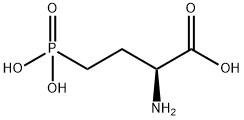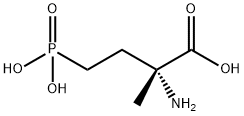opticalpurityopticalpurity:≥95%(HPLC,Marfey′sreagent) , 23052-81-5
Synonym(s):
L -AP-4;Cartilage-Derived Morphogenetic Protein-1;CDMP-1;LAP4;L-AP4
CAS NO.:23052-81-5
Empirical Formula: C4H10NO5P
Molecular Weight: 183.1
MDL number: MFCD00083244
EINECS: 200-258-5
| Pack Size | Price | Stock | Quantity |
| 0.5MG | RMB932.93 | In Stock |
|
| 1mg | RMB1528.34 | In Stock |
|
| others | Enquire |
PRODUCT Properties
| Melting point: | 207-215 °C |
| Boiling point: | 491.7±55.0 °C(Predicted) |
| Density | 1.628±0.06 g/cm3(Predicted) |
| storage temp. | 0-6°C |
| solubility | H2O : 50 mg/mL (273.07 mM; Need ultrasonic) |
| pka | 2.19±0.10(Predicted) |
| form | solid |
| color | White |
| biological source | human |
| Water Solubility | Soluble to 5 mM in water and to 100 mM in 1eq. NaOH |
| Sensitive | Light Sensitive |
| CAS DataBase Reference | 23052-81-5(CAS DataBase Reference) |
Description and Uses
Metabotropic glutamate receptors (mGluR) function to modulate excitatory synaptic transmission in the brain. Eight subtypes (1-
Metabotropic glutamate receptors (mGluR) function to modulate excitatory synaptic transmission in the brain. Eight subtypes (1-8) and multiple splice variants of the mGluR have been identified and grouped based on their pharmacological properties. Group I mGluRs (subtypes 1 and 5) activate the phosphatidyl inositol pathway, while Group II (2 and 3) and Group III (4, 6, 7, and 8) inhibit adenylyl cyclase. L-AP4, an analog of L-glutamic acid, is a selective Group III mGluR agonist that functions presynaptically to suppress glutamate release (IC50 = 2.5 μM). L-AP4 has been shown to depress synaptic transmission in glutamatergic pathways in the hippocampus, olfactory bulb, and retina as well as act as an agonist at the quisqualate-sensitized AP6 site in hippocampus.
Safety
| Symbol(GHS) |  GHS07 |
| Signal word | Warning |
| Hazard statements | H315-H319-H335 |
| Precautionary statements | P261-P280a-P304+P340-P305+P351+P338-P405-P501a |
| Hazard Codes | Xi |
| Risk Statements | 36/37/38 |
| Safety Statements | 26-36 |
| WGK Germany | 3 |
| RTECS | ES7191700 |





